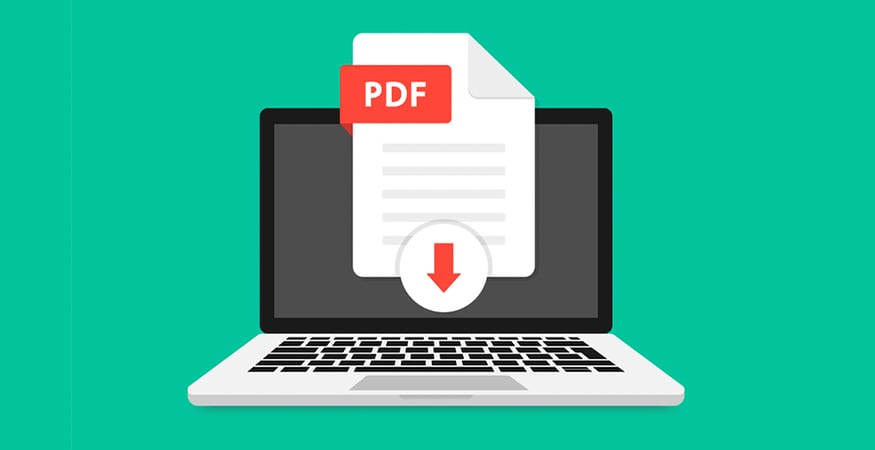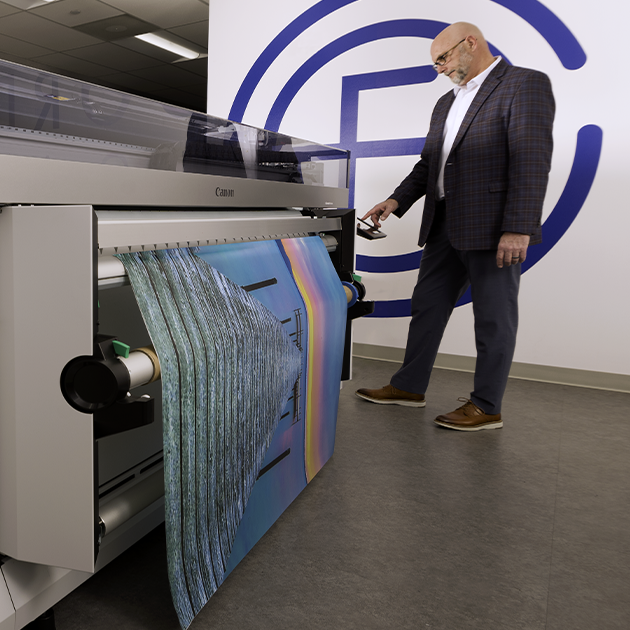When making a major office equipment purchase, the first question most people want to know is, how much will it cost?
If you’re looking to buy an office printer, you can expect to spend anywhere from $500 for a small printer to $100,000+ for a production machine with all the bells and whistles.
I get it… that’s not very helpful.
To narrow down printer and copier price ranges in 2023, the real question is not necessarily, “How much do printers cost?” Instead, it’s important to understand what you’re printing, how much you’re printing and why you’re printing.
It also matters whether you will lease or buy, which accessories you need, whether you need a service contract and whether toner costs are included.
Calculate Existing Printing Costs Before You Buy
Figuring out the total cost of ownership for printing technology is pretty straightforward, but there are several important considerations.
First, as a baseline, try to calculate how much you currently spend on printing per employee:
- It’s estimated that a typical office worker goes through 10,000 sheets of paper per year with about 17% of printed pages getting thrown away or put in the recycling bin.
- The average employee costs approximately $150 annually just for ink and toner.
- The total average cost when factoring in all printing costs — paper, ink, toner, repairs and replacements — amounts to about $750 per employee per year.
Calculating direct printing costs is just one part of the equation. We find that many of our new customers have way too many devices. Typically, they have a ratio of four employees to one device. With modern multifunction devices, we can often deliver a ratio closer to 12 to one or even better. This is in part because 80% of employees usually print to a local desktop printer instead of a shared office copier, unaware that their desktop printers are up to 12 times more costly.
RELATED: How to Calculate Printing Costs Per Page
Compare to the Cost of Managed Print
When you partner with a managed print services provider, you can expect to pay about $.015 for each page of black and white or $.065 for color prints. That’s roughly $30 per employee per month ($360 per year) and includes toner, maintenance, paper costs, etc. That is assuming an average employee prints 70% black and white and 30% color prints.
What’s the cost of a printer, commercial copier or multifunction printer (MFP) device? Leasing a typical office MFP today can cost between $10,000 to $15,000, which might sound expensive. But controlling the hidden costs of owning your own printers — overhead, waste, hardware maintenance, energy usage, toner, lost productivity, etc. — is what will save money in the long run. It’s important to consider the total cost of ownership or, in this case, leasing. A managed print service can also support many more people and deliver more cost-effective service.
By offering more efficient workflows and eliminating redundant machines, managed print can deliver financial savings of up to 30% over buying and maintaining a fleet of printers yourself.
The best way to really determine whether having a Managed Print program will offer cost savings over owning your own printers is to have the provider perform a thorough print assessment. Every organization is unique.
Want a free print assessment? Request one now!
Do We Really Need New Printers?
One thing many companies might not consider is that printing technology has become much more powerful and sophisticated in recent years. For example, newer print technology uses less toner than desktop printers (and we all know how expensive ink and toner is). Yet the print quality is superior.
If your marketing team frequently sends out projects for printing, you might not realize how cost-effective it is to bring those high-resolution printing jobs in-house without compromising quality. Color devices today can deliver production-quality prints without advanced digital printing software like Fiery controllers, color controllers or other advanced graphics software.
The power of devices has increased so much that you don’t need Fiery for many complex jobs. For example, the imagePRESS Lite C165 can deliver high-resolution color images in the form of an office multifunction device. There are even entry level production machines, like the Ricoh C7200X Series, that offer a 5th color which can print clear, white, neon yellow, neon pink and invisible red toner.
Other important considerations are whether you need stapling, punching, folding or other finishing tools. We find that many organizations buy printers and never know whether the machine has the capacity for internal or external finishers. You should always ask:
- Do you need your device to copy, print, scan and/or serve as a fax machine?
- What add-on accessories will you need? (e.g., staple, hole punch, security built-in, booklet folding)
- Can it handle envelopes, print on special paper or make trifolds?
- If you need scanning capabilities, what scanning volume do you anticipate? Will scanning be done one at a time or in bulk? Where is it being scanned to, and what do you do with it from there?
- Do you need to scan to email, OneDrive, Google Drive or another cloud service?
- How important are print speed, paper capacity and print volume capabilities?
One important feature of Canon, Ricoh and Lexmark printers is that the machines often have built-in cloud printing or offer a cloud printing app which can let users print documents and capture scanned data directly from a mobile device. You should also be able to use your favorite cloud storage services (Dropbox, Box, OneDrive, Google Drive, etc.) to access or store scanned documents.
Managed Print vs. Buying Printers: Which is Best?
Before buying a copier, color printer or other print technology this year, try to calculate how much each employee prints, what type of prints they need to make and how much you spend on toner supplies, recycling services and repairs. It might also be useful to explore how much time your IT team spends on printer issues to assess the cost of lost productivity. Also, find out if your company is sending out print jobs that could be done for less in-house.
Something that’s a bit harder to compare is energy cost savings. Many older printers are energy hogs, and new ENERGY STAR® printers use up to 30% less energy.
All combined, you might be surprised to discover that consolidating your print fleet to new MFP technology saves money, time and IT resources. There’s also something to be said about the value of not having to deal with the headaches of everyday printer problems.
A managed print program will offer the latest print technology, continuously monitor your devices and alert your provider when a piece of equipment is nearing the end of its life or is in need of repair so proactive service can be performed.
In addition to knowing the status of the equipment, you’ll be able to monitor your ink and toner levels and have supplies automatically reordered when you run low so you never run out again. Your machines will see reduced downtime and will free up your IT team to focus on more important, in-house projects that are critical to your business.
Lastly, nine out of 10 companies don’t even realize how many printers are floating around their offices and hallways. And it’s not uncommon for many print-related expenses to fly under the radar and not be formally approved. The purchase of a cheap inkjet printer for someone’s office, for example, may seem like a small expense at first. However, once the expensive ink cartridges, time for IT to set it up, repairs and inevitable replacements are added up across multiple similar scenarios, the costs skyrocket.
Part of a comprehensive managed print service also includes helping develop a print strategy and print protocols for employees so that usage and expenses can be tracked to help rein in costs.
If you’re ready to take the next step, it might be helpful to download our Office Printer Checklist. It will help you perform an audit of your print environment and identify potential vulnerabilities and costs. Click below for your copy, then reach out to our team to help you take a deeper dive.










